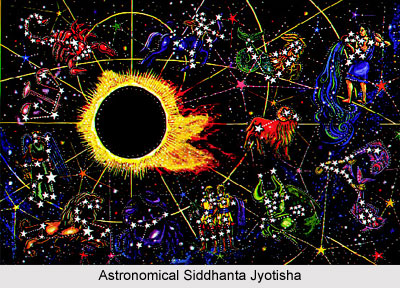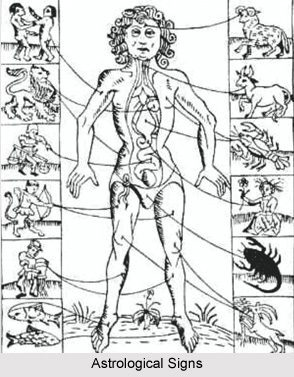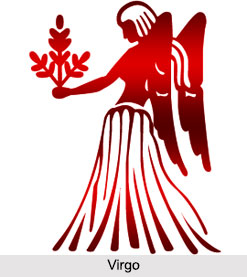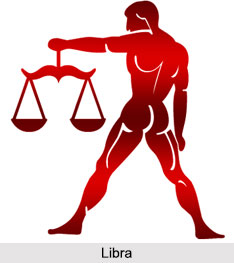Astronomical Siddhanta which lay the base for all astronomical calculations of ancient Indian Astronomy has been one of the ancient theories available to calculate the movement of the planets and their impact on Indian social life. This includes the salient features of Hindu mathematical astronomy and its influence on the Siddhantas of Indian astronomy which is primarily described in the Five Siddhantas. The Astronomical Siddhantas had been considered important in Hindu astronomy where it provides the rule to assess and calculate the actual position of the Sun and the Earth. As the entire study of astronomy depends on the calculation of the day and night, the months, years as well as movement of various planets, these have been reorganised scientifically under Siddhantas. While the Astronomical Siddhanta begins with a description of five types which are, namely, Paulisa Siddhanta, Romaka Siddhanta, Surya Siddhanta which includes modern Surya Siddhanta as well, and Mahayuga Siddhanta; each provides its own description of astronomical science based on the calculation of the longitude and latitudinal position of the earth as well as sun. The further includes the influence of mathematics on Hindu Astronomy to make the calculations more accurate than before.
 Astronomical siddhanta while describing the five Siddhantas begin with Paulisa Siddhanta which is required to calculate the accuracy of the ahargana from given period of time till a said time. It provides the rules for finding the longitude of the Sun, moon, and their true places which is different from their mean places. It further provides rules to calculate the direction, place and time; sine tables as well as simple calculations regarding the commencement of solar and lunar eclipse. This is followed by the second Siddhanta which is known as Romaka Siddhanta. This Siddhanta is primarily influenced by the Roman law which shall help to assess the yuga, year and the intercalation of lunar months. The Romaka Siddhanta which included the work of Srisena and other ancient Indian Astronomer has been mainly compared with the work of Ptolemy and Hippercus which reflects the influence of the Roman astronomers in assessing the accuracy regarding the location of the moon as well as the sun in Hindu astronomy.
Astronomical siddhanta while describing the five Siddhantas begin with Paulisa Siddhanta which is required to calculate the accuracy of the ahargana from given period of time till a said time. It provides the rules for finding the longitude of the Sun, moon, and their true places which is different from their mean places. It further provides rules to calculate the direction, place and time; sine tables as well as simple calculations regarding the commencement of solar and lunar eclipse. This is followed by the second Siddhanta which is known as Romaka Siddhanta. This Siddhanta is primarily influenced by the Roman law which shall help to assess the yuga, year and the intercalation of lunar months. The Romaka Siddhanta which included the work of Srisena and other ancient Indian Astronomer has been mainly compared with the work of Ptolemy and Hippercus which reflects the influence of the Roman astronomers in assessing the accuracy regarding the location of the moon as well as the sun in Hindu astronomy.
Surya Siddhanta has been one of the most accurate as well as current Siddhanta which had not been the work of any one individual but many through various ages. It was for the first time summarized by Varahamihira in Panch Siddhantika which includes the Yuga elements of the Sun and the moon, cosmogony and geography as well as location of the planets. This was further elaborated in Modern Surya Siddhanta which was mainly reorganised by Lata who belongs to the age of Aryabhata I. Modern Surya Siddhanta mainly contains the rules of ancient Indian Astronomy which needs to be memorized. In order to easily memorise the entire Siddhanta the Modern Surya Siddhanta has been written in a highly condensed form which is divided into 14 parts which includes the principles of as well as the calculations of Indian astronomy. And lastly the fifth Siddhanta known as Mahayuga Siddhanta is the first among all the Astronomical Siddhanta which calculate the actual years of the earth`s existence. This includes the contribution of number of astronomers from different age starting from manu till the modern age. Among them Aryabhata I divides Mahayuga into four yugas namely krita yuga or Golden age or satya yuga also known as Satyug; Treta yuga also known as silver age; Dwapara yuga also known as Bronze age and Kali yuga or Iron age which is presently known as Kalyug which represents the present day.
Astronomical Siddhanta after thedescription of various siddhantas then highlights the influence of mathematics on Indian astronomy which was explicitly described by Aryabhata I who discovered his own mathematical formula for calculating the movement of stars.
Thus, Astronomical Siddhantas had been the vital principles of Indian Astronomy which lay the foundation all astronomical innovations taking place in India from past till present.












